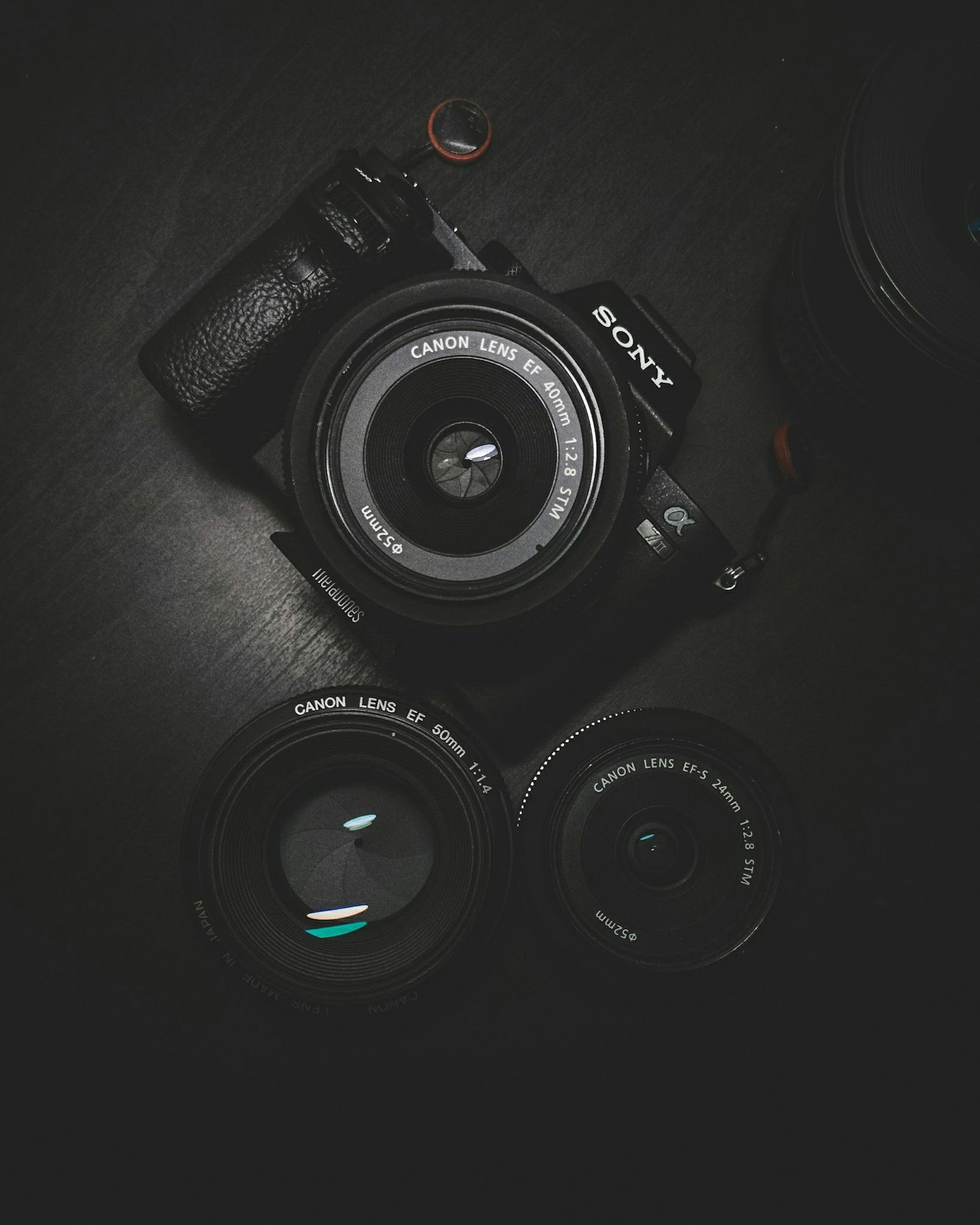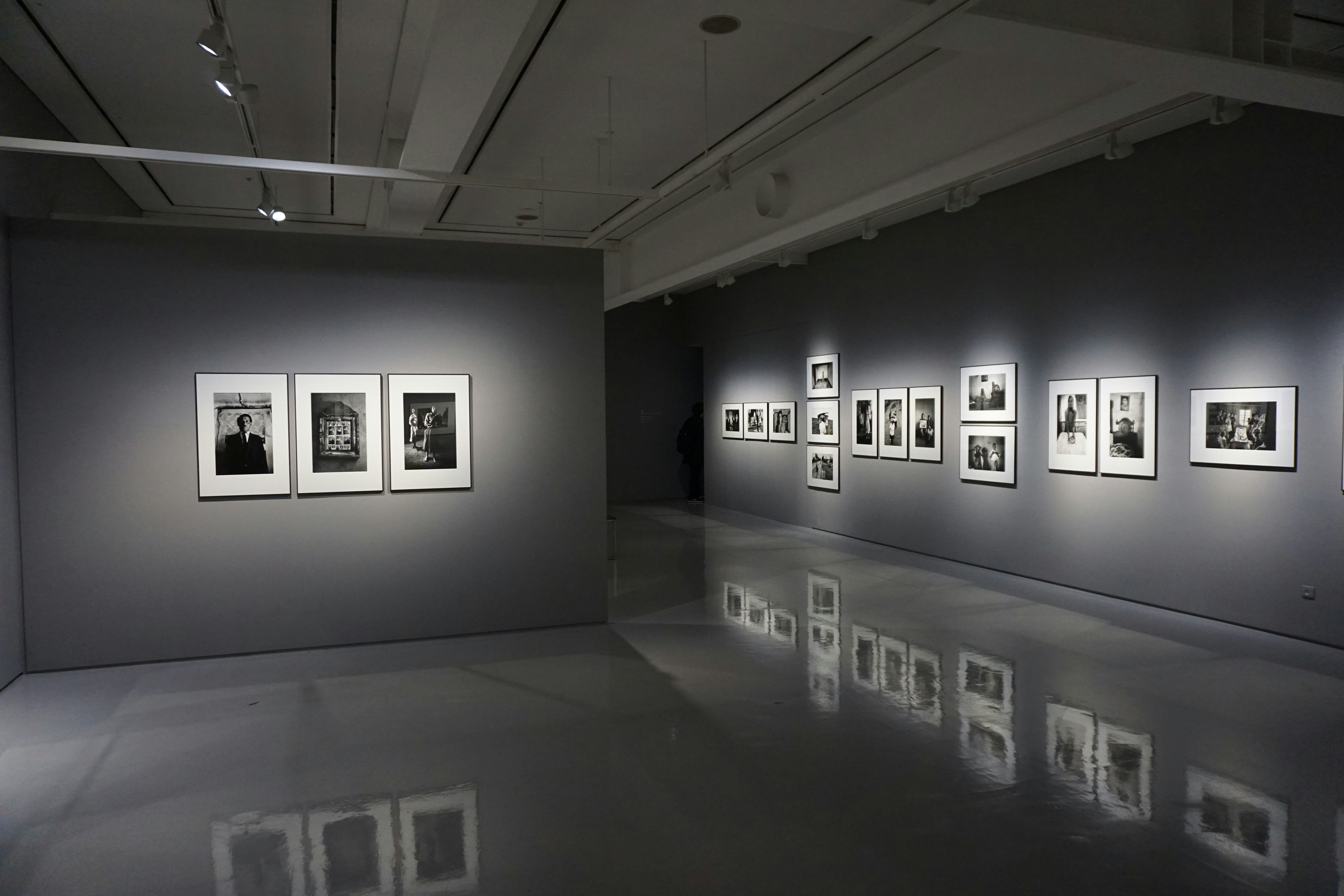Photography as Cultural Expression: Beyond Technical Mastery
Malik Mohsin Saleem Khan
March 10, 2024 · 14 min read

Introduction
Photography has evolved from a technical curiosity to one of the most powerful and pervasive forms of cultural expression in the modern world. As both artistic medium and documentary tool, photography shapes how we see ourselves, understand others, and interpret reality itself. Its unique capacity to capture specific moments while simultaneously reflecting broader cultural values and perspectives makes it an unparalleled window into human experience across time and place.
This comprehensive guide explores photography's role as cultural expression beyond technical considerations or aesthetic appreciation alone. From its historical development as both art form and social document to its contemporary ubiquity in digital culture, discover how photography both reflects and shapes cultural understanding. Whether you're interested in photography's artistic evolution, its documentary power, or its role in contemporary visual culture, this exploration offers insights into how photographic images function as complex cultural texts that reward deeper reading and interpretation.
Photography as Cultural Medium: Evolution and Significance
Photography's development as cultural medium involves complex interplay between technological innovation, artistic exploration, and social function. Understanding this evolution provides essential context for appreciating photography's distinctive role in cultural expression.
The historical development of photography transformed visual culture through unprecedented capacity to record optical reality with mechanical precision. Early photographic processes including daguerreotypes and calotypes (1840s-1850s) required specialized knowledge and equipment, limiting production to professionals and serious amateurs while creating wonder at photography's seemingly magical ability to freeze time. The democratization of photography through technological developments including dry plate processes (1870s), Kodak's "You press the button, we do the rest" cameras (1888), and 35mm film (1920s-30s) gradually expanded access beyond elite practitioners. Digital photography's emergence in the late 20th century and smartphone integration in the 21st century completed this democratization process, making photography nearly universal in developed societies. This technological evolution transformed photography from specialized practice to ubiquitous cultural activity, fundamentally changing its social role and cultural significance.
Photography's dual identity as both documentary evidence and artistic expression creates distinctive tensions and possibilities central to its cultural significance. Its mechanical nature and apparent objectivity established photography as seemingly transparent window on reality, creating unprecedented documentary authority compared to hand-created images. Simultaneously, photographers from the medium's earliest days explored its artistic potential through composition, lighting, subject selection, and eventually manipulation, challenging simplistic understanding of photographs as unmediated reality. This fundamental tension between documentary and artistic functions—between showing "what was there" and expressing the photographer's vision—creates photography's distinctive cultural position between mechanical recording and subjective expression. Rather than representing contradiction, this dual nature explains photography's unique cultural power to simultaneously document specific moments and express broader cultural values and perspectives.
Photography's relationship with other visual arts has evolved from initial competition to complex dialogue and integration. Early photography adopted compositional conventions from painting while threatening painting's documentary function, pushing painting toward greater abstraction and expressionism. Modernist photography in the early 20th century embraced medium-specific qualities including precise detail, unusual perspectives, and frozen motion rather than imitating painterly effects. Postmodern approaches since the 1970s increasingly blurred boundaries between photography and other media through appropriation, staging, digital manipulation, and conceptual frameworks questioning photographic truth claims. Contemporary art photography frequently incorporates multiple media and approaches, from large-format tableaux rivaling history painting's scale and ambition to conceptual works using photographs as components within larger artistic strategies. These evolving relationships demonstrate photography's distinctive position within visual culture—neither entirely separate from other arts nor merely subsidiary to them, but rather engaged in continuous dialogue while maintaining its specific characteristics and cultural functions.
Photography's social impact extends far beyond aesthetic considerations to fundamentally transform how societies document, remember, and understand themselves. Family photography created unprecedented visual records of ordinary lives, democratizing portraiture previously available only to elites while establishing new rituals of memory-making and identity formation. Photojournalism and documentary photography brought distant events and social conditions to immediate public awareness, creating shared visual reference points that shaped collective understanding of historical moments from the Civil War to the Vietnam conflict to contemporary crises. Advertising photography developed sophisticated visual language influencing desire and consumption patterns across consumer societies. Scientific and medical photography transformed fields from astronomy to microscopy by making visible previously unseen realms. These diverse social functions demonstrate photography's extraordinary range as cultural medium, simultaneously serving artistic, commercial, scientific, personal, and journalistic purposes while continuously evolving with changing technologies and cultural contexts.
Documentary Traditions: Witnessing and Interpreting
Documentary photography represents one of the medium's most significant cultural functions, creating visual records that both witness specific moments and interpret broader social realities. Understanding documentary traditions reveals photography's complex role in shaping cultural understanding of ourselves and others.
The evolution of documentary photography reflects changing approaches to visual truth-telling and social engagement. Early documentary work including Jacob Riis's "How the Other Half Lives" (1890) and Lewis Hine's child labor photographs (early 1900s) explicitly aimed to catalyze social reform through revealing hidden conditions to middle-class audiences. The Farm Security Administration photographers during the Great Depression, including Dorothea Lange and Walker Evans, developed more nuanced approaches balancing empathy with aesthetic sophistication while working within government programs. Mid-century documentary photographers like W. Eugene Smith created extended photo essays combining journalistic purpose with personal vision. The "New Documents" approach emerging in the 1960s through photographers like Diane Arbus and Garry Winogrand shifted toward more subjective, ambiguous documentation without explicit reform agendas. Contemporary documentary practices increasingly acknowledge the photographer's positionality and the medium's limitations while exploring collaborative approaches with subjects. These evolving approaches demonstrate documentary photography's continuous negotiation between witnessing reality and interpreting it through particular perspectives.
"Photography is a small voice, at best, but sometimes—just sometimes—one photograph or a group of them can lure our senses into awareness." — W. Eugene Smith
Ethical considerations in documentary photography address fundamental questions about representation, power, and responsibility. The relationship between photographer and subject involves inherent power dynamics, particularly when photographing vulnerable populations or difficult circumstances, raising questions about consent, dignity, and potential exploitation. Context and framing significantly influence how images are understood, with the same photograph potentially conveying dramatically different meanings depending on presentation, captioning, and surrounding material. Manipulation and staging create tensions between literal accuracy and deeper truth, from minor adjustments enhancing impact to complete fabrication undermining documentary credibility. These ethical dimensions have become increasingly central to documentary discourse, reflecting growing awareness of photography's power to shape perception and the responsibility this power entails.
Cultural representation through documentary photography involves complex questions about who photographs whom and how different cultures are visually portrayed. The colonial gaze in early anthropological and travel photography frequently presented non-Western peoples as exotic specimens rather than complex individuals, creating visual taxonomies reflecting Western power structures and preconceptions. National Geographic's evolving approach demonstrates shifting representation practices, from early exoticizing imagery to more nuanced contemporary work acknowledging the magazine's problematic history while seeking more equitable representation. Indigenous and local photographers increasingly challenge outsider documentation through self-representation projects creating visual narratives from within communities rather than imposed external perspectives. These evolving approaches to cultural representation reflect broader reconsideration of who has the right to document others and how different cultural realities can be respectfully and accurately portrayed.
Documentary photography's contemporary relevance continues despite challenges to photographic truth claims in the digital era. Citizen photojournalism through smartphone cameras and social media distribution creates unprecedented documentation of events from natural disasters to political protests, sometimes reaching audiences before traditional media coverage. Long-form documentary projects addressing complex issues from climate change to migration provide depth and context increasingly rare in fragmented media environments. Participatory approaches including photovoice projects enable communities to document their own realities rather than being passive subjects of outside documentation. These contemporary practices demonstrate documentary photography's continued cultural significance while acknowledging its limitations and evolving in response to changing media environments and ethical considerations.
Photography as Art: Expression and Innovation
Photography's development as artistic medium involves continuous exploration of its distinctive characteristics while engaging with broader artistic movements and questions. Understanding this artistic evolution reveals photography's unique contributions to visual culture beyond mere documentation.
The struggle for artistic legitimacy marked photography's early history, with practitioners and institutions debating whether mechanical reproduction could constitute genuine artistic expression. Pictorialism (1890s-1920s) sought artistic legitimacy through emulating painting's aesthetic qualities, with photographers like Alfred Stieglitz and Edward Steichen creating soft-focus, heavily manipulated images demonstrating subjective vision rather than mechanical recording. Modernist photography rejected pictorialist approaches in favor of "straight photography" embracing the medium's inherent qualities—precise detail, frozen motion, unusual perspectives—through photographers like Paul Strand, Edward Weston, and Imogen Cunningham. These debates about photography's artistic nature established fundamental questions about medium specificity, mechanical reproduction, and artistic intention that continue influencing photographic discourse while gradually securing photography's position within artistic institutions.
Major artistic movements found distinctive expression through photographic means, demonstrating the medium's flexibility in engaging with diverse aesthetic approaches. Surrealism explored photography's capacity to make the familiar strange through techniques including unusual perspectives, photomontage, and darkroom manipulation in work by Man Ray, Lee Miller, and others. Abstract photography investigated non-representational possibilities through extreme close-ups, camera-less techniques like photograms, and exploration of light and form by photographers including László Moholy-Nagy. Conceptual art utilized photography's documentary capacity while questioning artistic conventions through work by artists like Ed Ruscha and Bernd and Hilla Becher, who used seemingly objective photographic approaches to explore conceptual questions. These diverse engagements with artistic movements demonstrate photography's capacity to participate in broader artistic discourse while developing medium-specific approaches to shared aesthetic concerns.
- Pictorialism: Sought artistic legitimacy through painterly effects and manipulation
- Modernism: Embraced photography's inherent qualities including precision and unique perspective
- Surrealism: Explored photography's capacity to make the familiar strange
- Conceptualism: Used photography's documentary nature while questioning artistic conventions
Contemporary art photography encompasses diverse approaches reflecting photography's mature status as artistic medium. Large-scale production values in work by photographers like Andreas Gursky and Candida Höfer create imposing presence rivaling painting's traditional scale and museum impact. Constructed and staged photography by artists including Cindy Sherman and Gregory Crewdson creates elaborate fictional scenes questioning photographic truth claims while developing complex visual narratives. Appropriation strategies recontextualize existing images to examine representation and media culture, as in work by Richard Prince and Sherrie Levine. These contemporary approaches demonstrate photography's evolution from medium seeking artistic legitimacy to sophisticated artistic language engaging with complex cultural questions while maintaining distinctive photographic qualities.
The digital transformation of photography has fundamentally changed both technical possibilities and conceptual frameworks for photographic art. Digital manipulation creates unprecedented control over image elements, from subtle adjustments to complete fabrication, blurring boundaries between photography, painting, and digital art. Post-photography approaches question traditional definitions as images increasingly originate from algorithms, appropriation, and recombination rather than direct camera capture. Virtual and augmented reality extend photography beyond two-dimensional representation into immersive experience. These technological developments have not rendered traditional photographic concerns obsolete but rather expanded the medium's possibilities while raising new questions about representation, reality, and the nature of photography itself in an era where the traditional definition of "taking a picture" increasingly fails to encompass the diversity of photographic practices.
Photography in Contemporary Culture: Identity and Power
Photography's role in contemporary culture extends far beyond specialized artistic or documentary practices to fundamentally shape how we understand ourselves, others, and the world around us. These pervasive cultural functions reveal photography's extraordinary influence on contemporary experience.
Identity construction through photography has evolved from formal studio portraits to continuous visual self-creation through social media and other platforms. Historical portrait photography established conventions for presenting social identity through carefully constructed studio settings with specific poses, clothing, and props signifying status and character. Family photography created visual narratives of belonging and continuity through ritualized documentation of significant moments from weddings to graduations to vacations. Contemporary selfie culture represents not merely narcissism but complex self-fashioning through which individuals continuously create and revise visual identities for specific audiences. These evolving practices demonstrate photography's central role in externally representing internal identity, creating visual anchors for both individual self-understanding and social recognition.
Photography's relationship with memory has transformed how cultures preserve and understand their past, both collectively and individually. The photograph as memory aid extends human recollection beyond biological capacity, creating external memory banks that preserve specific visual details otherwise lost to time. Photographic archives—from family albums to institutional collections—construct particular narratives about the past through selection, arrangement, and preservation of certain images while excluding others. The concept of "postmemory" describes how photographic images transmit traumatic historical experiences to subsequent generations who didn't directly witness events but inherit their impact through powerful visual documentation. These memory functions demonstrate photography's profound influence on temporal experience, creating persistent visual connections between past and present that shape both personal and collective historical understanding.
Power relationships expressed through photography reveal how the medium both reflects and reinforces social structures while occasionally challenging them. The gaze in photography—who looks at whom and how—reflects broader power dynamics, from colonial photography's objectifying view of indigenous peoples to male photographers' historical dominance in representing female subjects. Surveillance photography from 19th-century criminal identification systems to contemporary facial recognition technology demonstrates photography's role in systems of social control and categorization. Resistance through photography emerges when marginalized groups claim representational power, creating counter-images challenging dominant narratives about their identities and experiences. These power dimensions reveal photography not as neutral recording but as active participant in social systems that determine who is seen, how they're portrayed, and who controls these representations.
Visual literacy in an image-saturated culture becomes increasingly essential as photographs mediate more aspects of contemporary experience. Critical reading of photographs involves understanding both technical aspects (framing, lighting, perspective) and contextual elements (purpose, audience, distribution) that shape meaning. Awareness of manipulation possibilities from traditional darkroom techniques to sophisticated digital alteration helps viewers navigate truth claims in journalistic, commercial, and personal images. Historical knowledge about photographic conventions and their evolution provides context for interpreting contemporary images that reference, adapt, or reject these traditions. These visual literacy skills enable more sophisticated engagement with photographic culture beyond passive consumption, supporting critical analysis of the images that increasingly shape our understanding of reality.
Engaging with Photography: From Viewing to Creating
Moving beyond passive consumption to active engagement with photography—whether as viewer, collector, or creator—enriches understanding of the medium's cultural significance while developing personal connection to photographic practices and traditions.
- Develop deeper viewing practices: Move beyond initial impressions to thoughtful analysis:
- Spend extended time with individual photographs rather than rapid scanning
- Consider formal elements including composition, lighting, perspective, and timing
- Examine contextual factors such as historical period, photographer's background, and original purpose
- Reflect on your emotional and intellectual responses and what generates them
- Explore diverse photographic traditions: Expand beyond familiar styles and approaches:
- Visit photography exhibitions spanning different periods, cultures, and genres
- Study photobooks as complete artistic statements rather than merely collections of images
- Research photographers from underrepresented groups and regions beyond Western canon
- Examine vernacular photography including family albums, commercial portraits, and anonymous images
- Consider photography's cultural contexts: Understand images within broader frameworks:
- Research historical and social circumstances surrounding significant photographs
- Examine how the same subject appears across different photographic approaches
- Consider how distribution contexts (galleries, magazines, social media) affect meaning
- Analyze relationships between photographs and accompanying text or captions
- Create thoughtful photographic projects: Move beyond casual image-making:
- Develop conceptual frameworks before shooting rather than merely collecting random images
- Consider ethical dimensions including subject relationships and potential impact
- Edit selectively to create coherent visual statements rather than exhaustive documentation
- Reflect on your perspective and how it shapes what and how you photograph
- Engage with photographic communities: Participate in collective exploration:
- Join photography groups, workshops, or online communities for feedback and discussion
- Attend artist talks and exhibition openings to engage with creators directly
- Participate in collaborative projects addressing community concerns or shared themes
- Support local photography organizations and publications sustaining photographic culture
Photography education and appreciation can develop through multiple pathways beyond formal academic study. Self-directed learning through photography books provides deep engagement with both historical and contemporary work, with monographs offering comprehensive understanding of individual photographers while thematic collections explore particular subjects or approaches. Online resources including museum collections, photographer websites, and educational platforms provide unprecedented access to diverse photographic work and contextual information. Photography workshops and community education offer hands-on learning combining technical instruction with conceptual development and critical feedback. Museum and gallery exhibitions provide opportunities to experience photographic prints directly, appreciating physical qualities lost in reproduction while engaging with curatorial frameworks. These educational approaches complement each other, combining intellectual understanding with visual experience and potentially practical application through personal photographic practice.
Personal photography practice—whether casual or serious—benefits from understanding cultural and artistic contexts while developing individual vision. Technical skill development remains important but serves expression rather than becoming an end itself, with techniques selected based on communicative intent rather than technical impressiveness alone. Conceptual development through research, planning, and reflection creates more coherent and meaningful projects than merely accumulating technically proficient images. Ethical consideration regarding subjects, representation, and potential impact demonstrates respect for photography's power while creating more thoughtful work. These approaches transform personal photography from mere recording to meaningful cultural practice, whether creating family documentation, artistic expression, or something between these traditional categories.
The Evolving Landscape of Photography
Photography continues evolving through technological developments, cultural shifts, and artistic innovations. Understanding emerging trends provides perspective on how this visual medium may develop while addressing contemporary questions and challenges.
Technological transformations continue reshaping photographic possibilities and practices. Computational photography using algorithms rather than merely optical processes creates images impossible with traditional photography, from smartphone portrait modes synthesizing depth information to HDR techniques combining multiple exposures. Artificial intelligence applications including automated editing, subject recognition, and even image generation raise fundamental questions about authorship and the nature of photography itself. Immersive technologies including virtual and augmented reality extend photography beyond two-dimensional representation into spatial experience. These technological developments don't merely add new capabilities but potentially transform photography's fundamental nature, challenging traditional definitions while creating new expressive and documentary possibilities.
Democratization and globalization of photography continue through both technological access and platform development. Smartphone photography has made camera access nearly universal in many societies while reducing technical barriers to creating and sharing images. Social media platforms enable global distribution of photographs outside traditional gatekeeping institutions like galleries, museums, and publications. Photographers from previously underrepresented regions increasingly gain international recognition, challenging Western-dominated photographic canons while introducing diverse visual perspectives. These democratizing trends create both unprecedented opportunity for diverse photographic voices and challenges including overwhelming volume, context collapse, and platform control over visibility algorithms determining which images reach audiences.
Critical engagement with photography's social impact has intensified amid growing awareness of the medium's power to shape perception and reinforce or challenge power structures. Representation ethics regarding who photographs whom and how different communities are portrayed has moved from specialized academic discourse to mainstream consideration. Privacy concerns in an era of ubiquitous photography, facial recognition technology, and permanent digital archives raise questions about consent, surveillance, and the right to control one's image. Truth and manipulation questions have gained urgency as digital alteration becomes simultaneously easier to perform and harder to detect, challenging photography's traditional evidentiary authority. These critical considerations don't diminish photography's cultural importance but rather demonstrate its central role in contemporary visual culture and the responsibility this centrality entails.
Conclusion
Photography's evolution from technical innovation to ubiquitous cultural practice represents one of modernity's most significant visual developments. Its unique capacity to combine mechanical recording with subjective expression creates distinctive cultural power that continues shaping how we see ourselves, others, and the world around us, despite—or perhaps because of—ongoing technological and conceptual transformations.
The medium's remarkable versatility enables it to simultaneously function as artistic expression, historical documentation, scientific tool, commercial medium, and personal memory practice, with these diverse functions often overlapping and informing each other. This versatility explains photography's pervasive cultural presence while creating productive tensions between different approaches to photographic truth, beauty, and purpose that continue generating new practices and perspectives rather than resolving into single definition or function.
Perhaps most significantly, photography demonstrates how technological innovation creates not merely new capabilities but new ways of seeing and understanding reality itself. By making visible what previously remained unseen—whether distant cultures, fleeting moments, or microscopic realms—photography has fundamentally transformed human visual experience while raising profound questions about representation, reality, and the relationship between seeing and knowing that remain central to contemporary visual culture. As the medium continues evolving through digital transformation and cultural reconsideration, these essential questions ensure photography's ongoing significance as both artistic medium and cultural practice that shapes how we visualize and understand our world.
Frequently Asked Questions
How can I develop a more critical understanding of the photographs I encounter daily?
Start by slowing down your viewing process to move beyond initial impressions. Ask specific questions about both formal elements (How is it composed? What perspective is used? How does lighting create mood?) and contextual factors (Who created this image and why? Where is it being shown? What's included and excluded from the frame?). Consider how the same subject might appear differently if photographed by someone with different cultural background or intent. For news and documentary images, examine captions and surrounding text that shape interpretation. For advertising and commercial photography, analyze how technical choices create specific emotional responses or desires. This critical viewing transforms passive consumption into active engagement with the photographs that increasingly shape our understanding of reality.
What's the relationship between photography's documentary and artistic functions?
Rather than opposing categories, documentary and artistic functions exist on a spectrum with most significant photography incorporating elements of both. Even the most straightforward documentary work involves subjective choices about framing, timing, and perspective that shape meaning beyond mechanical recording. Conversely, artistic photography often derives power from connection to real subjects and events rather than complete fabrication. The most compelling work frequently occupies the tension between these approaches—using documentary content within artistic frameworks or bringing aesthetic sophistication to documentary purpose. Understanding this relationship helps appreciate photography's unique cultural position between mechanical recording and subjective expression, where its distinctive power emerges not from choosing between these functions but from their productive interaction.
How has digital photography changed the medium's relationship with truth and authenticity?
Digital technology hasn't created entirely new questions about photographic truth but has intensified existing tensions while making manipulation simultaneously easier to perform and harder to detect. Photography has never been purely objective—choices about framing, timing, and context have always shaped meaning, while darkroom techniques allowed significant alteration long before digital tools. However, digital photography has transformed the medium's relationship with reality through several mechanisms: seamless manipulation capabilities that leave no visible trace; computational photography creating images impossible with optical processes alone; and AI-generated imagery that looks photographic without camera capture of actual subjects. These developments require more sophisticated understanding of photographic truth beyond simple binary of 'real versus fake,' focusing instead on transparency about process, context, and intent behind images.
Malik Mohsin Saleem Khan
Founder
Author bio information


